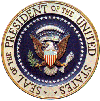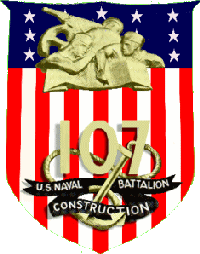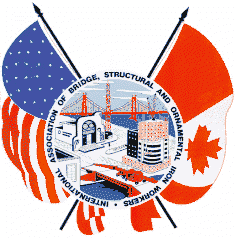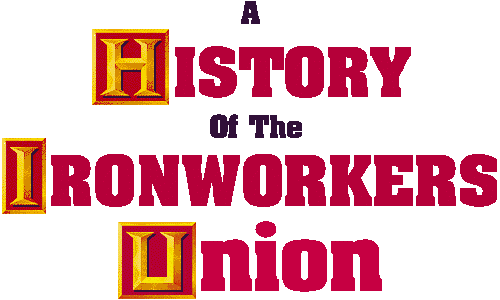|
Prelude

Our History
Before 1896
Part
One
Part
Two

A Union is Born
1880 - 1906
Part
One
Part
Two
Part
Three

The Turbulent Years
1906 - 1912
Part
One
Part
Two
Part
Three
Part
Four
Part
Five

The Conspiracy Trials
and Aftermath
1912 - 1918
Part
One
Part
Two
Part
Three
Part
Four

The Beginning of the
Morrin Era
1918 - 1929
Part One
Part Two
Part
Three
Part
Four

The Depression and a New
Deal For Labor
1930 - 1940
Part One
Part Two
Part
Three
Part
Four
Part
Five

World War II
and the Post War Struggles
1941 - 1952
Part One
Part Two
Part
Three
Part
Four
Part
Five

Ironworkers Grow in the
1950's
1953 - 1961
Part
One
Part
Two
Part Three

John H. Lyons Jr.
Elected President
1961 - 1976
Part One
Part Two
Part Three

The Tradition Continues
1977 - 1988
Part One
Part Two
Part Three

Pathways to the 21st
Century Under The Leadership of General President Jake West
1989 - Present
Part One
Part Two
Part Three

Home
E-mail
GeoCities
|

Part Two
 he
following is the letter sent by General President Morrin to the President
on December 8, 1941 and the reply our International received: he
following is the letter sent by General President Morrin to the President
on December 8, 1941 and the reply our International received:
|
 International
Association of Bridge, International
Association of Bridge,
Structural and Ornamental Ironworkers
St. Louis, Mo.,
December 8, 1941
Honorable Franklin D.
Roosevelt,
President of the United States,
White House,
Washington, D. C.
The International Association of Bridge, Structural and
Ornamental Iron Workers, through its officials, pledges to
you, our commander-in-chief, our full cooperation and
support in all of your efforts to defend and protect our
country against the unwarranted and unjustifiable attacks of
Japan or any other nation which challenges the principles of
freedom and democracy for which our country stands.
P. J.
Morrin,
General President,
I. A. of B., S., & O., I. W.
. |
|
|
 The
White House The
White House
December 9, 1941
P. J. Morrin, Esq.,
General President,
International Association of Bridge, Structural,
and Ornamental Iron Workers,
St. Louis, Missouri.
My dear Mr. Morrin:
Permit me, in the President's name, to thank you and your
association for your telegram. The pledges of
patriotic support which have been received from the many,
many loyal citizens in all parts of the country have given
the President strength and courage to carry out the will of
the American people.
For the splendid assurance conveyed in
your message he is more appreciative than he can say.
Very sincerely yours,
Stephen
Early
Secretary to the President.
. |
|
In the January, 1942 issue of
the Bridgemen's Magazine the opening story dealt with the fact that the A.
F. of L. through all of its affiliates pledged to purchase one billion
dollars worth of United States Defense Bonds. At the same time our
International Association subscribed for $100,000 worth of Defense Bonds,
as well as $180,000 worth of United States Treasury Notes to help win the
war. Before the war was over the government had six "War Loan
Drives" and our Union and other unions invested to help end the war.

EARLY FIGHTING IN THE
PACIFIC
Many members of our Union and
other construction workers were working at the time of the early Japanese
attacks in the Pacific. There were 10,000 A. F. of L. members
working in Hawaii, 700 stationed on Midway, 400 at Guam and a small number
on Wake Island.
"Far out in the Pacific Ocean, on tiny Island
outposts of America's vital defenses, hundreds of
courageous American Federation of Labor members flung down
the tools of their trade, picked up whatever weapons were
at hand and fought valiantly side by side with American
Marines and soldiers against the treacherous and deadly
attacks of vastly superior Japanese forces."
. |
|
Ironically the Ironworkers and
other construction workers captured by the Japanese on Wake Island at
first received no compensation. While the government passed a bill
covering the families of soldiers captured, nothing was done for the
workers captured. The A. F. of L. found that their families were in
a terrible state and asked Congress for legislation to cover them. A
bill was passed to pay 70% of their salary to their families and the rest
placed in a fund for them upon their liberation, however, this payment was
only retroactive to January 4, 1944. Finally Congress passed
legislation in November of 1945 that gave them their pay retroactive to
January 1, 1942.
 Many
Ironworkers not only would serve in all branches of the military, but they
would serve in the "Seabees." The fighting, never-say-die
spirit of America's workers was exemplified in the South Pacific, when the
battle-scarred U. S. aircraft carrier Yorktown, damaged in the battle of
the Coral Sea was made ready for further battle by the Seabees who made
emergency repairs at sea while the carrier was steaming to the scene of
the battle of Midway. Part of the repairs was actually completed
while the ship was in battle. Many
Ironworkers not only would serve in all branches of the military, but they
would serve in the "Seabees." The fighting, never-say-die
spirit of America's workers was exemplified in the South Pacific, when the
battle-scarred U. S. aircraft carrier Yorktown, damaged in the battle of
the Coral Sea was made ready for further battle by the Seabees who made
emergency repairs at sea while the carrier was steaming to the scene of
the battle of Midway. Part of the repairs was actually completed
while the ship was in battle.  Seabees
were men recruited for the Navy principally through the cooperation of A.
F. of L. building trades unions. They were all volunteers, forming
the Navy's Construction Battalion, trained to work and fight.
Typical of these men was John J. Wade of Local 373 in Perth Amboy, New
Jersey who served with the Seabees in the 107th Battalion for three and a
half years in the South Pacific. After the war he continued in his
post as Recording Secretary of local 373 and became Assistant Business
Agent in 1946. Eventually, upon the death of Business Agent Wesley
T. Hansen he was elected Business Agent until his retirement in
1975. He celebrated his 90th birthday in November, 2000 and is
still active in the affairs of the local. He has been a member
of Local 373 for seventy-two years since his initiation in 1928. Seabees
were men recruited for the Navy principally through the cooperation of A.
F. of L. building trades unions. They were all volunteers, forming
the Navy's Construction Battalion, trained to work and fight.
Typical of these men was John J. Wade of Local 373 in Perth Amboy, New
Jersey who served with the Seabees in the 107th Battalion for three and a
half years in the South Pacific. After the war he continued in his
post as Recording Secretary of local 373 and became Assistant Business
Agent in 1946. Eventually, upon the death of Business Agent Wesley
T. Hansen he was elected Business Agent until his retirement in
1975. He celebrated his 90th birthday in November, 2000 and is
still active in the affairs of the local. He has been a member
of Local 373 for seventy-two years since his initiation in 1928.

REORGANIZING FOR WAR
After Pearl harbor Congress
passed the "War Powers Act" giving extraordinary powers to the
President. Roosevelt would set up various Federal Agencies and
distribute various wartime tasks to them. One of the agencies
created was the War Production Board (WPB) with a Labor Production
Division headed by a labor representative. The purpose of this
division was to set up joint labor-management committees and to take
suggestions from workers on how the war plant could operate more
efficiently. Although this was denounced by industry as socialism
and as a "foolish experiment," over 5000 factories would take
part, and production increased.
Another problem was
manpower. Before the war ended 11 million men and women would enter
the armed forces. Of this number about 60% or about 6.5 million were
taken from industry and the building trades. In 1941 there were
still eight million unemployed in spite of Roosevelt's New Deal.
Some of them went into the war plants but many went into the military
service. New war plants located in rural areas recruited
farmers. Many senior citizens went back to work, and child labor
legislation was relaxed to allow two million older teenagers to work.

However, one of the largest
sources of new labor was
the six million women who entered the workforce.
Known as "Rosie the Riveter" they helped to build
12,000 ships, 300,000 planes and 87,000 tanks and
hundreds of thousands of cannons, machine guns,
rifles and other firearms from 1941 to 1945.

Scroll to the top and click on
World War II and the Post War
Struggles
1941 - 1952 - Part Three
(Back
to top)
[Home]
[Officers]
[Upcoming
Events]
[Ironworkers'
Prayer] [Old
Timer's Night] [Links
to Other Unions]
[History
of American Labor] [A
History of the Iron Workers Union]
[Local
373 E-mail] [Webmaster
E-mail] [373
Members E-mail Directory]
[Sign
Guestbook] [View
Guestbook] |


 he
following is the letter sent by General President Morrin to the President
on December 8, 1941 and the reply our International received:
he
following is the letter sent by General President Morrin to the President
on December 8, 1941 and the reply our International received: International
Association of Bridge,
International
Association of Bridge, The
White House
The
White House Many
Ironworkers not only would serve in all branches of the military, but they
would serve in the "Seabees." The fighting, never-say-die
spirit of America's workers was exemplified in the South Pacific, when the
battle-scarred U. S. aircraft carrier Yorktown, damaged in the battle of
the Coral Sea was made ready for further battle by the Seabees who made
emergency repairs at sea while the carrier was steaming to the scene of
the battle of Midway. Part of the repairs was actually completed
while the ship was in battle.
Many
Ironworkers not only would serve in all branches of the military, but they
would serve in the "Seabees." The fighting, never-say-die
spirit of America's workers was exemplified in the South Pacific, when the
battle-scarred U. S. aircraft carrier Yorktown, damaged in the battle of
the Coral Sea was made ready for further battle by the Seabees who made
emergency repairs at sea while the carrier was steaming to the scene of
the battle of Midway. Part of the repairs was actually completed
while the ship was in battle.  Seabees
were men recruited for the Navy principally through the cooperation of A.
F. of L. building trades unions. They were all volunteers, forming
the Navy's Construction Battalion, trained to work and fight.
Typical of these men was John J. Wade of Local 373 in Perth Amboy, New
Jersey who served with the Seabees in the 107th Battalion for three and a
half years in the South Pacific. After the war he continued in his
post as Recording Secretary of local 373 and became Assistant Business
Agent in 1946. Eventually, upon the death of Business Agent Wesley
T. Hansen he was elected Business Agent until his retirement in
1975. He celebrated his 90th birthday in November, 2000 and is
still active in the affairs of the local. He has been a member
of Local 373 for seventy-two years since his initiation in 1928.
Seabees
were men recruited for the Navy principally through the cooperation of A.
F. of L. building trades unions. They were all volunteers, forming
the Navy's Construction Battalion, trained to work and fight.
Typical of these men was John J. Wade of Local 373 in Perth Amboy, New
Jersey who served with the Seabees in the 107th Battalion for three and a
half years in the South Pacific. After the war he continued in his
post as Recording Secretary of local 373 and became Assistant Business
Agent in 1946. Eventually, upon the death of Business Agent Wesley
T. Hansen he was elected Business Agent until his retirement in
1975. He celebrated his 90th birthday in November, 2000 and is
still active in the affairs of the local. He has been a member
of Local 373 for seventy-two years since his initiation in 1928.